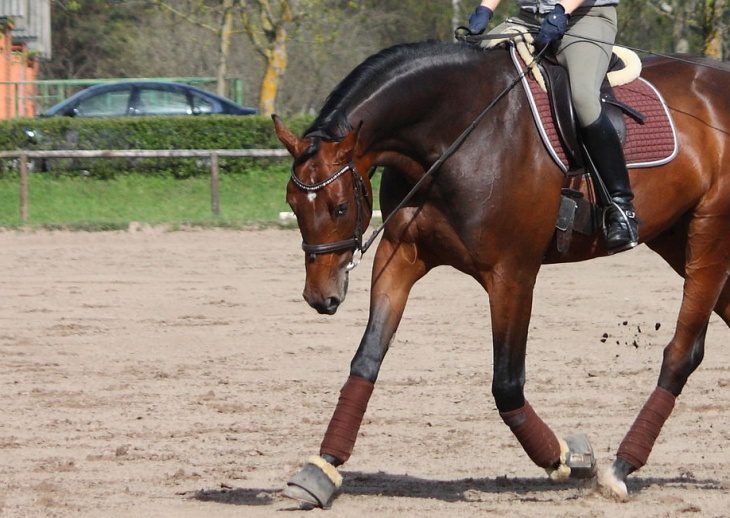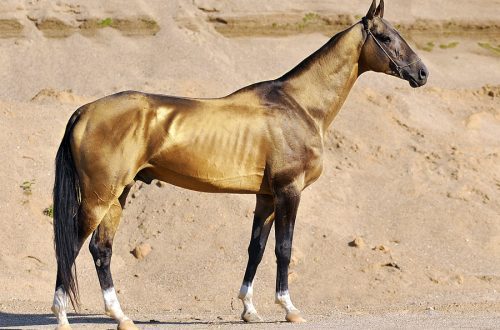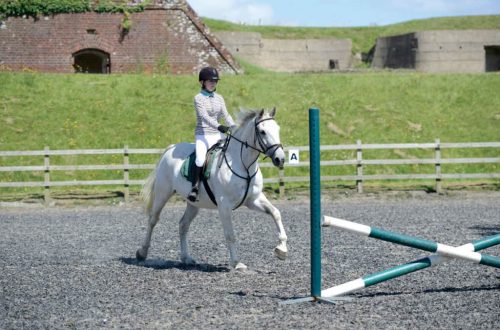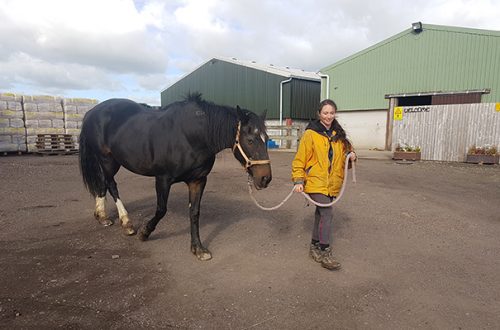
Work on the reduced canter
Work on the reduced canter
What should you do if you can’t cut your horse at a canter and every time you try it goes into a trot? How to keep it collected? ToHow to shorten the pace of the canter while maintaining the rhythm?
Simply using the reins won’t work here – it really will just force the horse to just trot. You also need, figuratively speaking, to use the brake and gas pedals in unison. It seems that this can discourage the horse, but if you build his skill gradually, the result will not be long in coming.
But first of all, I would like to draw your attention to the following: not every horse is physically able to canter short enough to look good in competitions. Western pleasure. Horses suitable for this discipline have shorter strides. Their “motor” is not so powerful and they want to move short. Asking for such a canter from a horse that cannot physically give it to you is like driving a round peg into a square hole. The result will be an artificial four-beat canter. However, any horse may be asked to slow down his rhythm and shorten his canter within a certain range.
Use your controls
Before we start building anything, we must provide a solid foundation, a foundation. In addition, in order to ask your horse for something, you will need certain tools of influence.
It is good if the horse already knows the side-shifting action of the leg, as this is one of the necessary tools. You must have control of your horse’s hips, as a horse that falls out on the outside hip will not be able to reduce the pace of the canter.
Start by turning on the forehand to teach the horse to keep his hips straight and under his body. Make sure the gas pedal works: the horse should go forward as soon as you ask him to, every time, always and everywhere without exception.
Then ask yourself, is the horse yielding to the leg, bending in the body or resisting, setting the jaw, lifting the head up?
So, with your leg (your gas pedal), you will need to send the horse forward on the reining rein. The horse must shorten the frame and collect, yield to the snaffle without losing momentum and without switching to the trot.
To form a particular habit in a horse, it is necessary to use positive and negative reinforcement. When you first begin training your horse to shorten the canter, reward even tiny steps in the right direction and prevent any evasions or resistance.
Have you ever played the hot and cold game? As the player gets closer to the hidden item, you yell “Hot!” – this tells the player that he is on the right track. When my horse is on the right track, I reward him. I call it the reward for trying or for having the right thought. Sometimes the horse guesses, and his attempt turns out to be correct, albeit random. When teaching a reduced canter, reward the horse as he shifts his weight back in an attempt to collect himself. Many horses will try to lift their head, accelerate or trot the first time. Your task is to block all incorrect attempts and reward the correct ones.
Return to the box
Imagine your horse is in a box. In order to slow down the canter, you must block every attempt by the horse to expand or accelerate (imagine that you are pushing against the front wall of the box). Maintaining the cantering rhythm with your leg and seat (at the back of the box), give the horse freedom every time he slows down (in the center of the box).
Imagine a XNUMXD box around your horse and shape his canter so that the horse is in the center of the box.
Eventually the horse will begin to understand what is required of him and will seek comfort and freedom in a reduced canter.
In theory, it all sounds pretty simple, but how often do we see riders hanging on the reins and “tug of war” with the horse without using the leg …
It is very important that the restraining force you use to cut is enough to get the horse’s attention. As you shorten the horse, draw your elbows slightly back, arms straight from the elbow and pointing in straight lines over the hips. Your hands should be closed, but not enslaved. A hard, dead brush will startle the horse and encourage him to avoid contact. If the hand is soft, but closed, “alive”, the horse will “accept” the pressure, and not run away from it. Maintain the pressure until the horse recognizes it by dropping the jaw and shortening the stride, even if only a little.
The horse may try to avoid the pressure by using several options – stretch the neck and lower the head down, lift it up, go into a trot, etc. Soften the hand only when you feel that it has reduced the pace of the canter. Reward her right away by letting your hands follow the vibrations of her head and neck.
Be consistent. This is the only way the horse will understand this give/take pattern.
It’s good to have someone watching you from the ground. When working with my students, I always ask them to ride next to me. I keep a close eye on the pair, and if the horse tries to escape from the pressure, I shout: “Hold!” If the horse gives the correct answer, then I tell the rider to “soften”. Eventually, through consistent shaping training, your horse will learn to shorten in a canter.
Lindsey Grice (source); translation by Valeria Smirnova.





